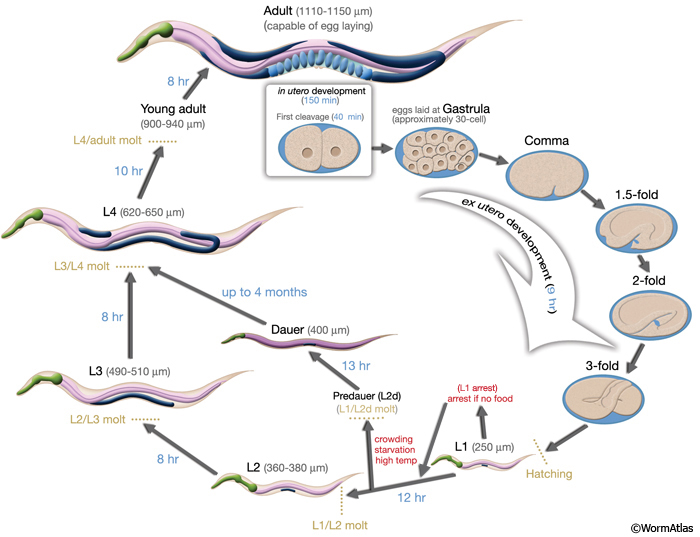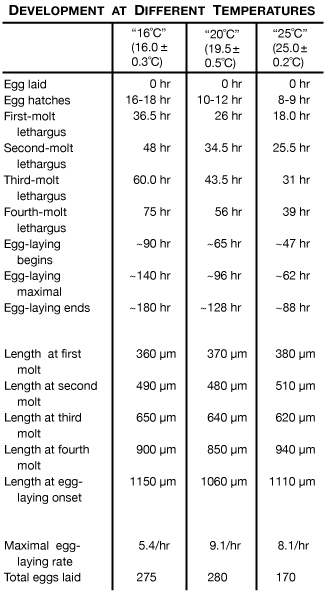Getting started with C. elegans
New to C. elegans? Here we outline steps and resources to get acquainted with the nematode model organism. For getting set up in the lab, click here.
First, some very basic background, courtesy of openworm.org. (For a longer introduction video, try this).
C. elegans grows at temperatures from 15C to 25C, faster at higher temperatures. Their life cycle is displayed below, including 4 larval stages (L1-L4) and adulthood. An alternate developmental pathway occurs during resource-limited conditions, in which animals enter the dauer state and can survive without feeding for months. In general, young adults are studied in the lab

Life cycle of C. elegans at 22C. 0 min is fertilization. Numbers in blue along the arrows indicate the length of time the animal spends at a certain stage. First cleavage occurs at about 40 minutes post-fertilization. Eggs are laid outside at about 150 minutes post-fertilization and during the gastrula stage. The length of the animal at each stage is marked next to the stage name in micrometers (μm). Click on picture for high resolution image.
Timelapse videos
What does this look like on a standard culture plate? Animals are fed bacteria (the oval in the center). A single egg was placed on the plate, and image frames were recorded every 5 mins for about 7 days. (Play back at 30fps, or 9,000x real time or 2.5hr/s). It takes about 2 days for the animal to become visible on the left side (0:18) and the ~300 progeny appear around (0:37). What happens when the food runs out? Check it out (0:57)!
Another example. Same as above, but recorded for 10 days. Note the similarity in timing compared with the video above.
As you see, there’s a long initial delay before a large population of animals has grown up, but very quickly, they run out of food. Most of the experiments done in the lab are performed with well-fed young adult animals, or well-fed L4-stage animals. However, the window of time in which a plate has many well-fed L4’s and/or young adults is relatively short, so it helps to plan ahead.
Below is a table to help stage animals. Wild-type N2 animals were placed on a seeded plate and observed daily until starvation, beginning with 1 or 3 eggs, L2-, L4- or young adult (YA)-stage animals, or a small agar chunk. Different plates were kept at 15C, 20C, or 25C. Green indicates conditions that result in many L4-stage animals ready to pick. Use this as a guide to plan future experiments, but keep in mind that mutants may grow at different rates.

